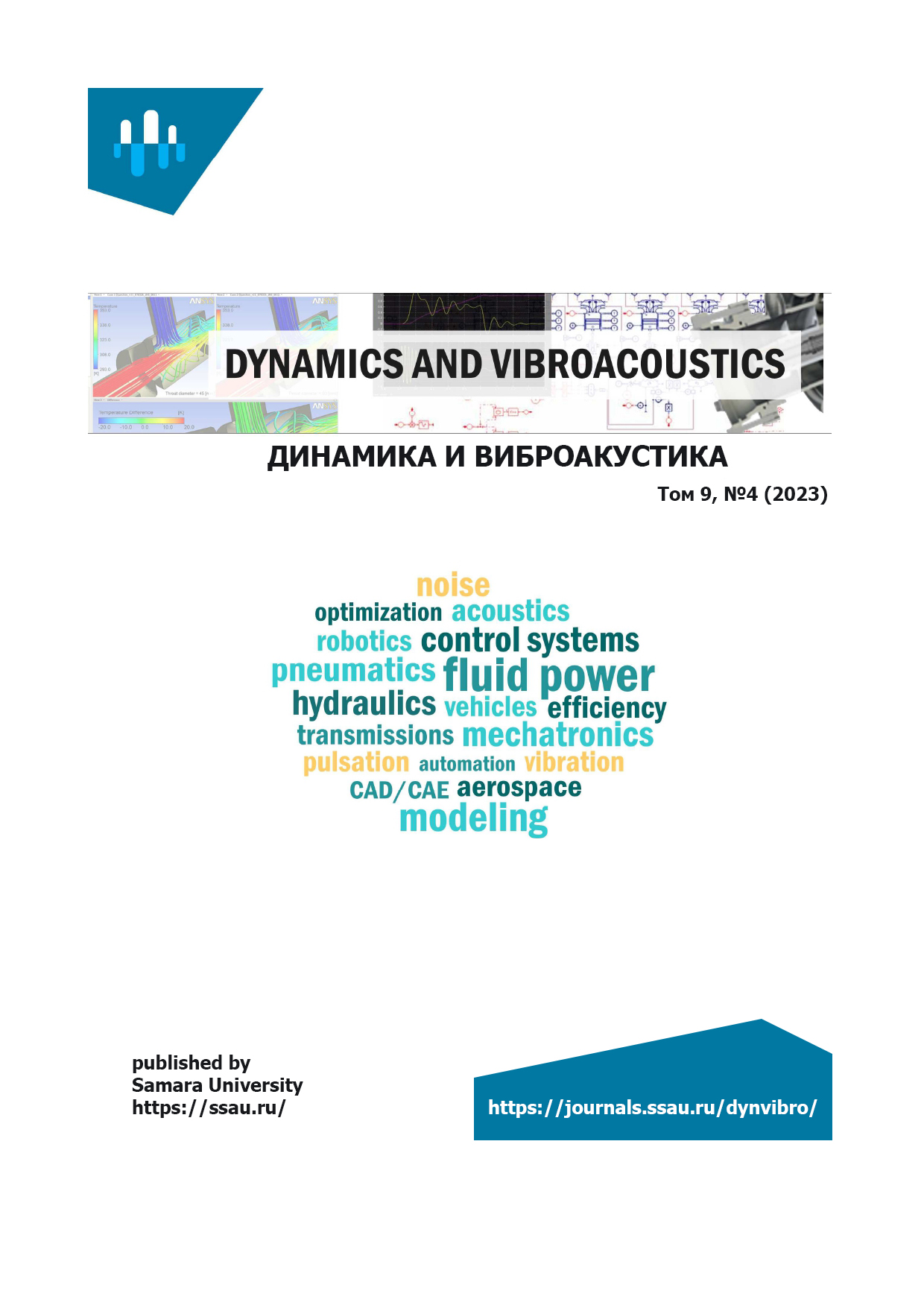ON THE ERRORS IN MEASUREMENT OF RESIDUAL STRESSES AND PREDICTION OF THE ENDURANCE LIMIT OF HARDENED PARTS
- Authors: Sazanov V.P.1, Pavlov V.F.1, Matveeva K.F.1, Konyhova A.S.1
-
Affiliations:
- Samara National Research University
- Issue: Vol 9, No 4 (2023): 30.12.2023
- Pages: 43-51
- Section: Articles
- Published: 30.12.2023
- URL: https://dynvibro.ru/dynvibro/article/view/27080
- DOI: https://doi.org/10.18287/2409-4579-2023-9-4-43-51
- ID: 27080
Cite item
Full Text
Abstract
The study is devoted to the analysis of discrepancy between the results of prediction and of multi fatigue tests of cylindrical parts with stress concentrator in the form of a semicircular notch, made of construction steels 20, 45, 30ХГСА and 40Х. The surface of the parts was hardened by hydro and pneumatic shot blasting methods. When predicting by the reference specimen method, bushes with a length of 80 mm, with an outer diameter of 51.5 mm and an inner diameter of 45 mm were used to determine residual stresses in the hardened layer. Modeling of the residual strain-stress state in bushes and notched parts was carried out using the Finite Element method in the environment of PATRAN/NASTRAN and ANSYS calculation systems using the thermo elastic method. When predicting the increment in the endurance limit due to hardening for parts with notches, the criterion of average integral residual stresses was adopted, determined at the critical depth of a non-propagating fatigue crack. The discrepancy between the calculated prediction and bending test results in the case of a symmetrical cycle was no more than 11% for pneumatic shot blasting and no more than 8% for hydro shot blasting. The positive results of the study showed that the accepted assumptions in the reference specimen method are completely justified.
About the authors
Vyacheslav P. Sazanov
Samara National Research University
Email: sazanow@mail.ru
Moskovskoe shosse, 34, Samara, 443086, Russian Federation
Valentin F. Pavlov
Samara National Research University
Author for correspondence.
Email: pavlov.vf@ssau.ru
Moskovskoe shosse, 34, Samara, 443086, Russian Federation
Karina F. Matveeva
Samara National Research University
Email: dakotastr@mail.ru
Moskovskoe shosse, 34, Samara, 443086, Russian Federation
Aleksandra S. Konyhova
Samara National Research University
Email: sopromat@ssau.ru
Moskovskoe shosse, 34, Samara, 443086, Russian Federation
References
- Kirpichev, V.A., Sazanov, V.P. and Shadrin, V.K. (2015), “An employment of reference specimens for an endurance limit of surface hardened parts with stress concentrators”, Vibrations in techniques and technologies, №1(77), pp. 22-27. (in Russian).
- Pavlov, V.F., Kirpichev, V.A., Vakulyuk, V.S. and Sazanov, V.P. (2015), “Calculation- experimental method of surface hardened parts endurance limit”, Materials science. Science and techniques, №5, pp. 32-42. (in Russian).
- Pavlov, V.F. (1986), “On connection between residual stresses and endurance limit under bending in stresses concentration conditions”, Universities News. Mechanical Engineering, no. 8. pp. 29-32. (in Russian).
- Pavlov, V.F. (1988), “The influence of residual stresses in a part with a concentrator surface layer value and distribution on the endurance limit. Report 1. Solid parts”, Universities News. Mechanical Engineering, no. 8, pp. 22-26. (in Russian).
- Pavlov, V.F., Kirpichev, V.A. and Vakulyuk, V.S. (2012), Prognozirovanie soprotivleniya ustalosti poverkhnostno uprochnennykh detaley po ostatochnym napryazheniyam [The prediction of surface hardened parts fatigue resistance by residual stresses], Samara scientific center, Publishing House of the Russian Academy of Sciences, Samara. (in Russian).
- Ivanov, S.I. (1971), “On determination of residual stresses in cylinder by rings-and-stripes method. Residual stresses”, Issues of strength of aircraft structural elements: transactions of KuAI, Kuibyshev Aviation Institute, issue 53, pp. 32-42. (in Russian).
- Ivanov, S.I. and Grigoryeva, I.V. (1971), “On determination of residual stresses in a cylinder by removing a part of surface”, Problems of aircraft constructions elements strength, Kuibyshev Aviation Institute, issue 48, pp.179-183. (in Russian)
- Timoshenko, S.P. and Goodier, G. (1979), Teoriya uprugosti [Elastic theory], Nauka [Science], Moscow. (in Russian).
- Sazanov, V.P., Kirpichev, V. A., Vakulyuk, V.S. and Pavlov, V.F. (2015), “The determination of initial deformations in the surface layer of a cylindrical part by the finite elements modeling method with use of the calculation program complex PATRAN/NASTRAN”, Ufa State Aviation Technical University bulletin, vol. 19, no. 2 (68), pp. 35-40. (in Russian).
- Sazanov, V.P., Chirkov, A.V., Semenova, O.Yu. and Ivanova, A.V. (2012),“The residual strain state of parts modeling under stress concentration conditions using the calculation program complex PATRAN/ NASTRAN”, Samara State Technical University bulletin. Part: technical sciences, no. 1 (33), pp. 106-114. (in Russian).
- Sazanov, V.P., Semenova, O.Yu., Kirpichev, V.A. and Vakulyuk, V.S. (2016), “Mathematical modeling of initial deformations in surface hardened parts under a choice of a reference specimen” , Ufa State Aviation Technical University bulletin, Vol. 20, №3 (73), pp. 31-37. (in Russian).
- Radchenko, V.P., Pavlov, V.F. and Saushkin, M.N. (2011), “The determination of hardening anisotropy parameter and residual stresses in a cylindrical steel specimen after rolling”, Mechanical Engineering and machines’ reliabilities, №4, pp. 93-100. (in Russian).
- Peterson, R.Е. (1977), Koeffitsienty kontsentratsii napryazheniy [Stresses concentration coefficients], Publishing House «МIR», Moscow. (in Russian).
Supplementary files







